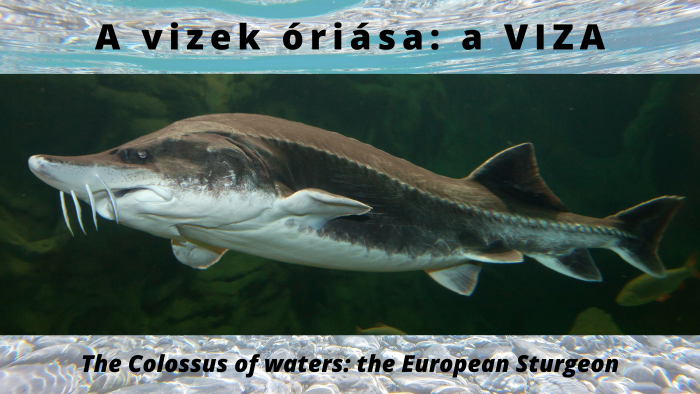The largest fish of ours
At just an arm's length you can observe immature individuals of pale-colored Beluga or White Sturgeon hatched in 2000, swimming around in the tank. Because their lives may easily span over 100 years, with a little luck the same specimens—at that time grown to enormous Methuselahs—may be seen by our great grandchildren as well. The largest species of fish ever to occur in Hungary, Beluga measuring 5–6-meter (16.5–19.5 feet) at 400–500 kilograms (882–1102 pounds) were quite common in the booty of Medieval fishermen. Nine-meter (over 29 feet) long and 1400-kilogram (3086 pounds) heavy sturgeons were exceptional even then. On the other hand, there are reports of fishermen harvesting one thousand Beluga in a single day.
In former centuries, this species was of huge commercial importance and provided a significant income to a multitude of families living along the Danube and the Tisza River. The last "Hungarian" Beluga was caught at Paks in May 1987. It measured 300 centimeters (9.8 feet) in length and weighed 181 kilograms (399 pounds).
The White Sturgeon is a so-called anadromous species spending its youth at sea and migrating up rivers to spawn, when adult. This particular specimen entered freshwater at every second year but others stayed here for a longer period.
The length of the snout is indicative of age, with the oldest individuals having the shortest and bluntest rostrum. The torpedo-shaped body is more or less naked, but has five rows of prominent bony plates and some smaller scutes. The top of the head is covered by shields. Four cylindrical, evenly spaced whiskers hang in front of the inferior, crescentic mouth. Although toothless, Beluga are fearsome predators as adults.
Beluga caviar is considered a delicacy and sells for hight prices worldwide. Larger, 100-kilogram (220-pound) females may produce 15–20 kilograms (33–44 pounds) of eggs worth 2000–3000 dollars per kilo (907–1360 dollars per pound).
